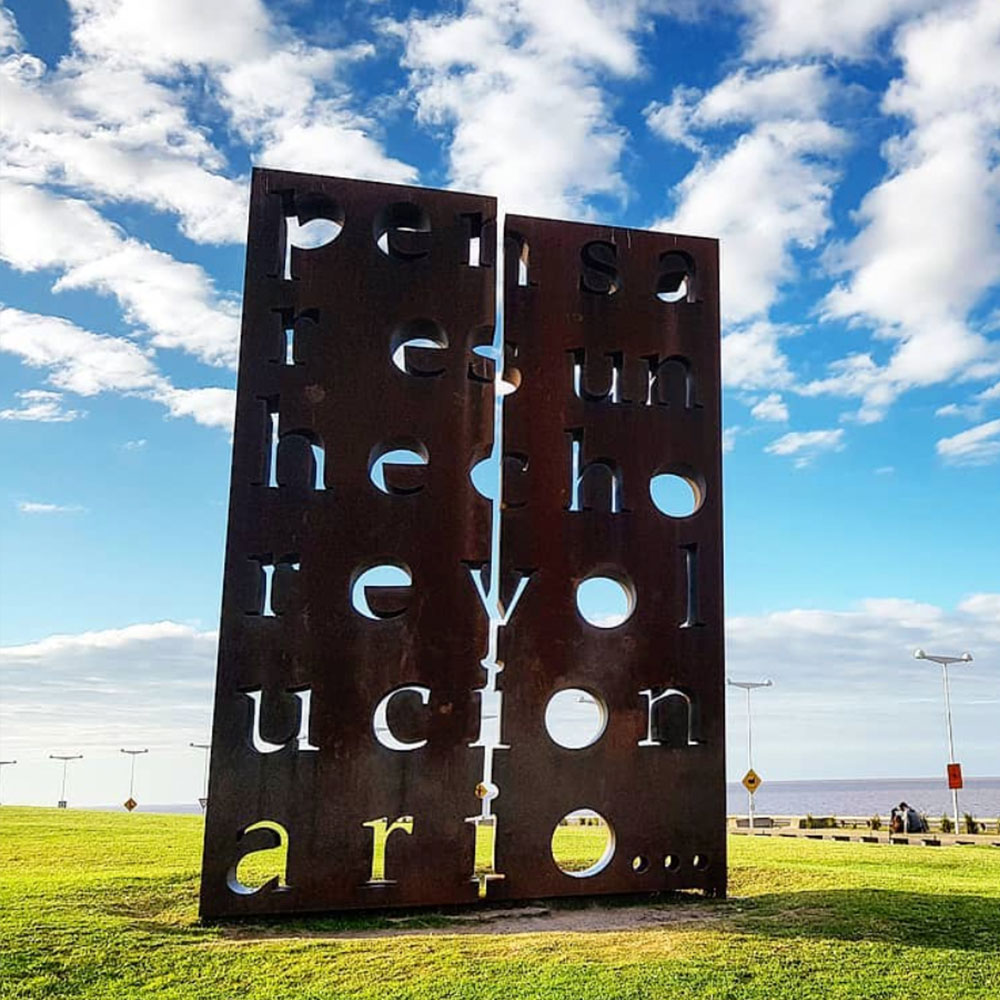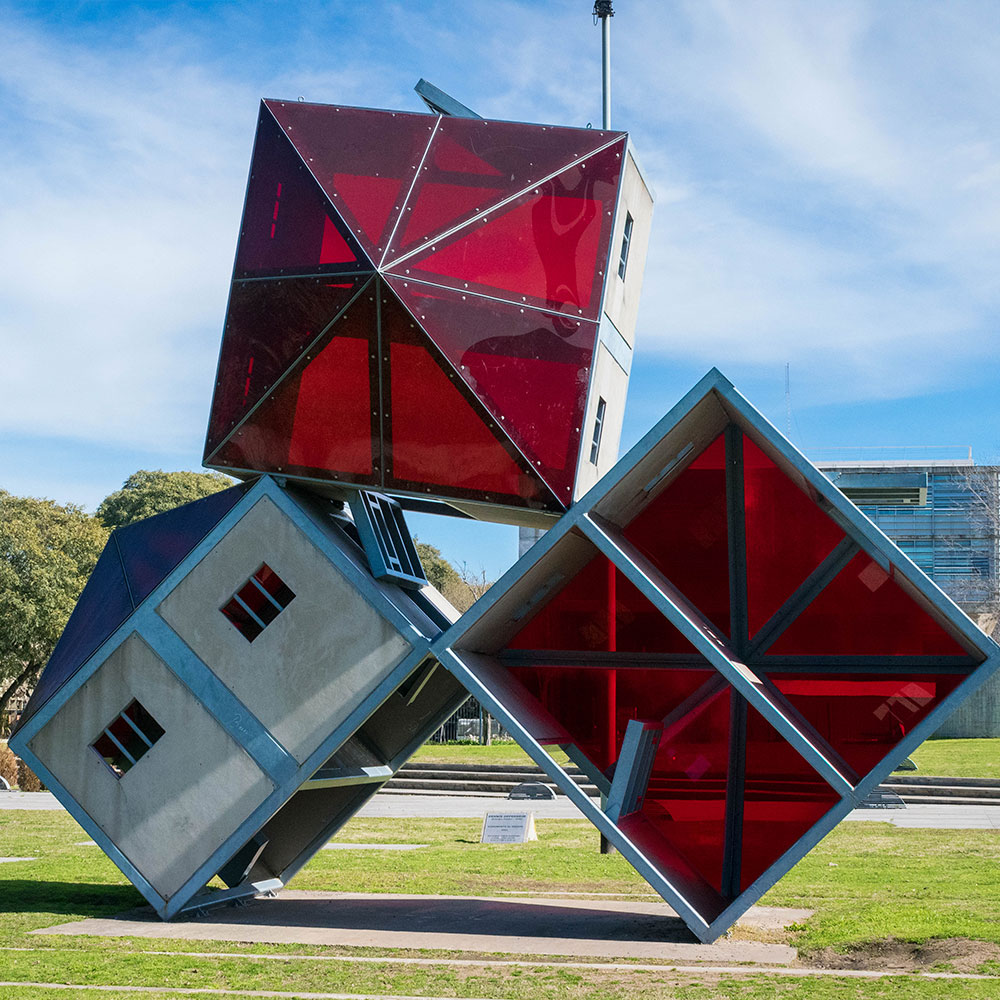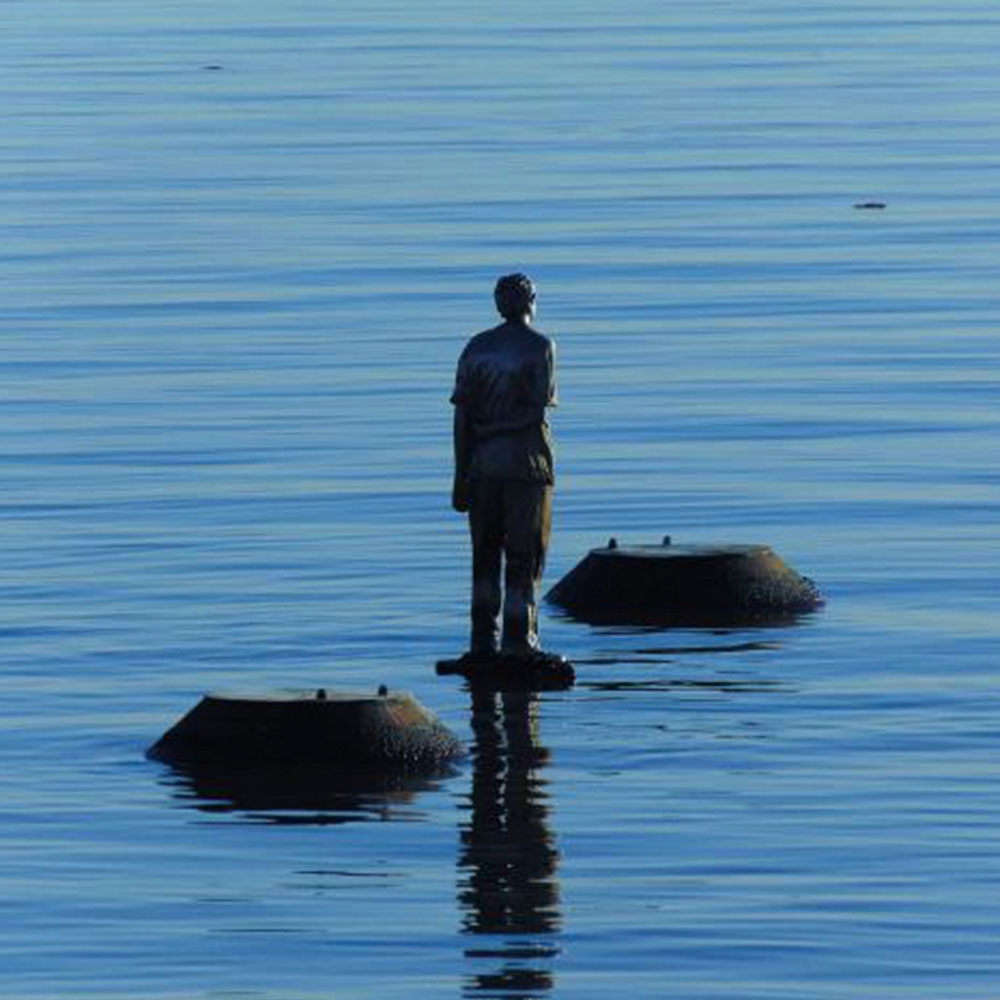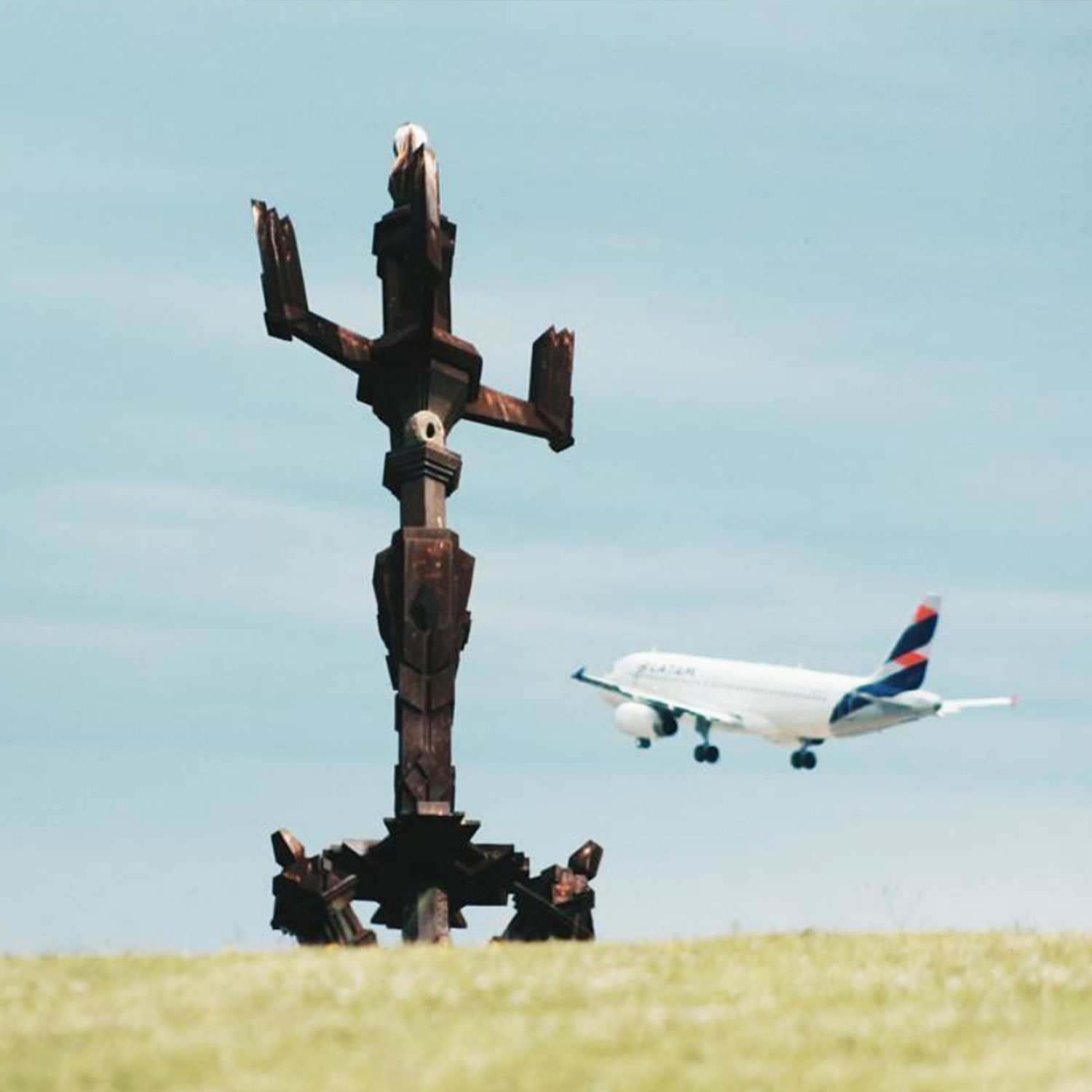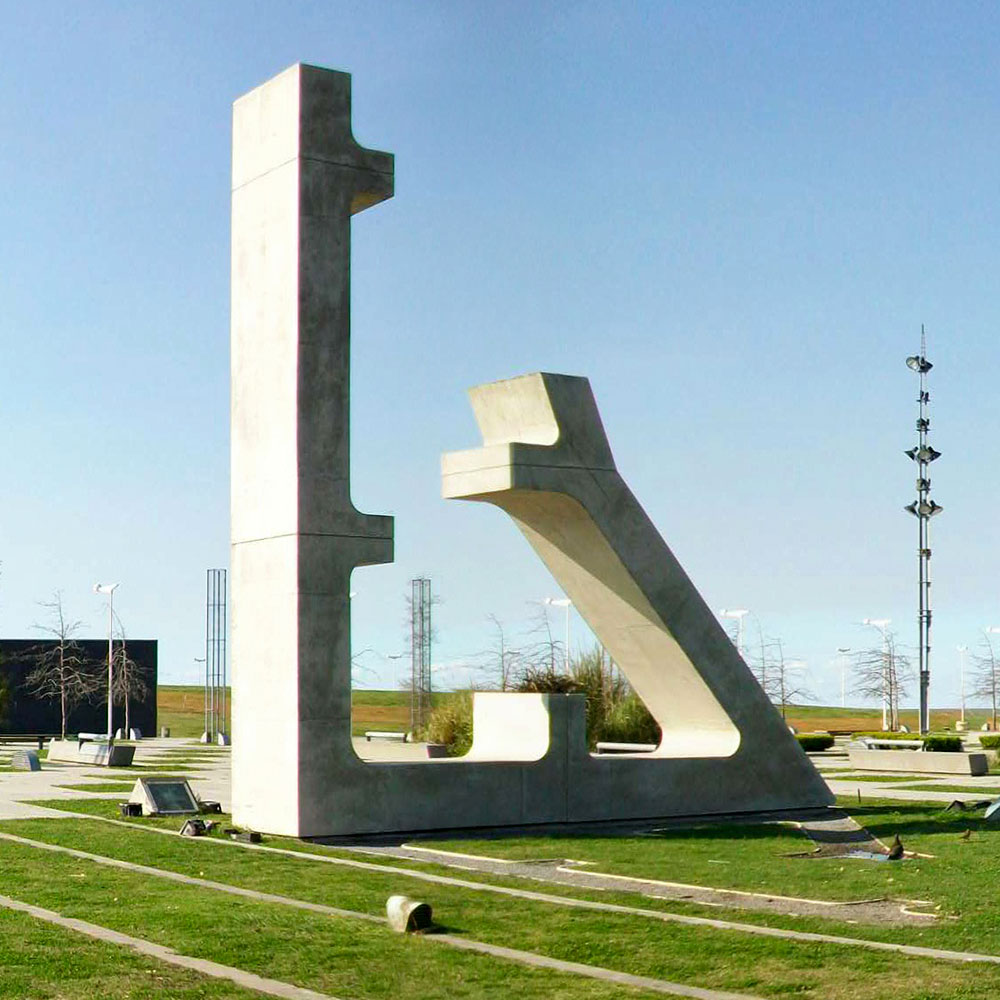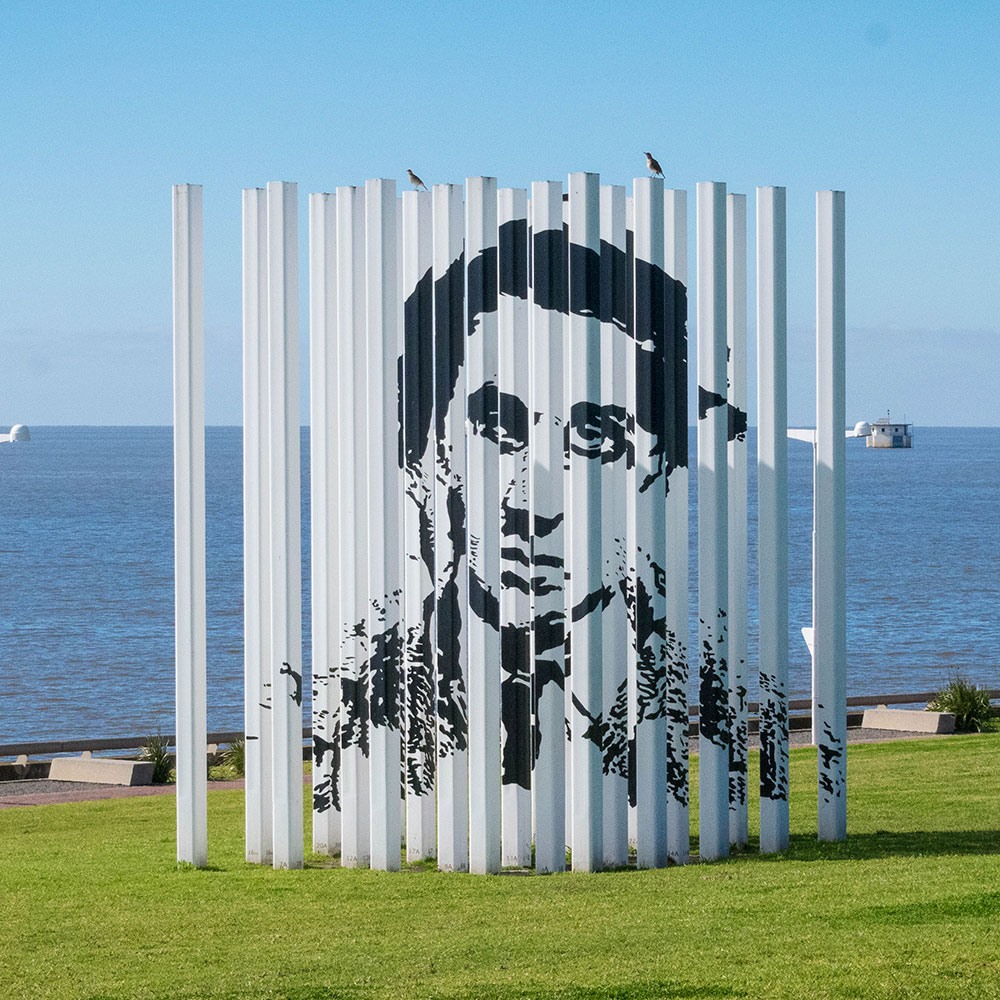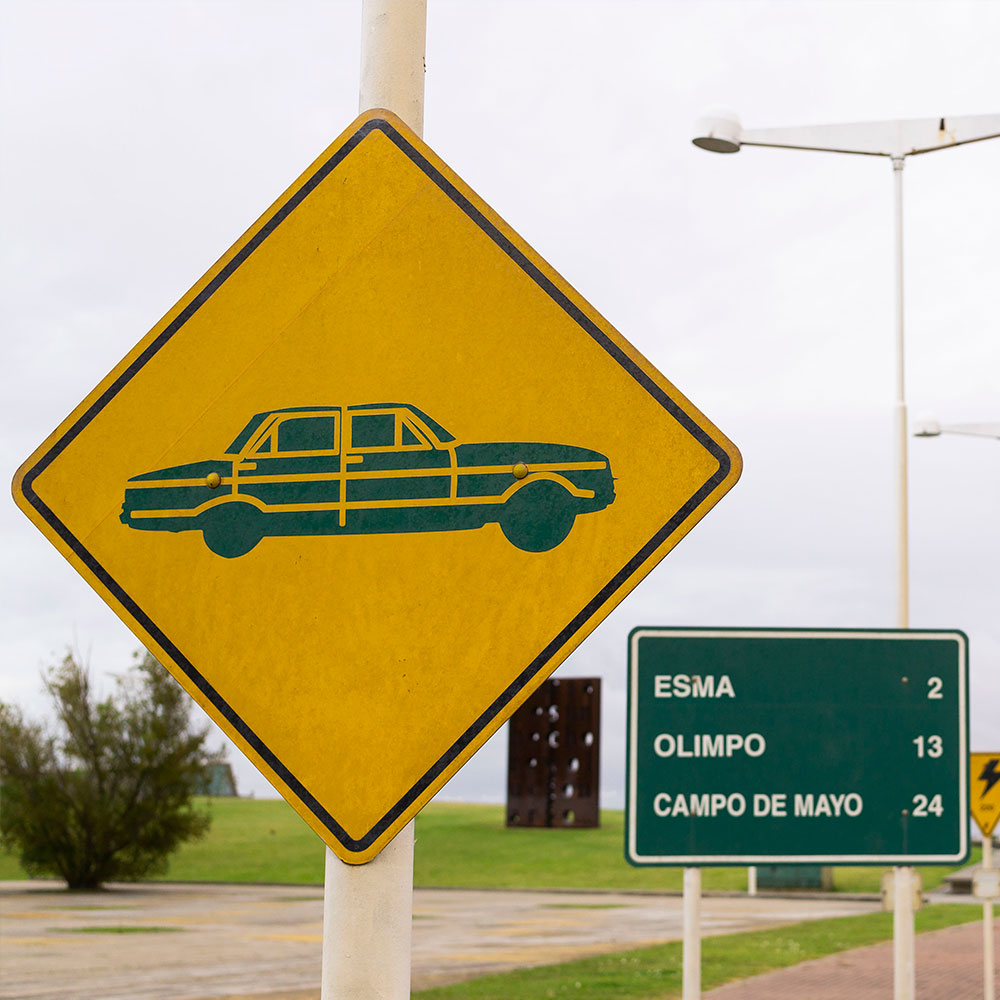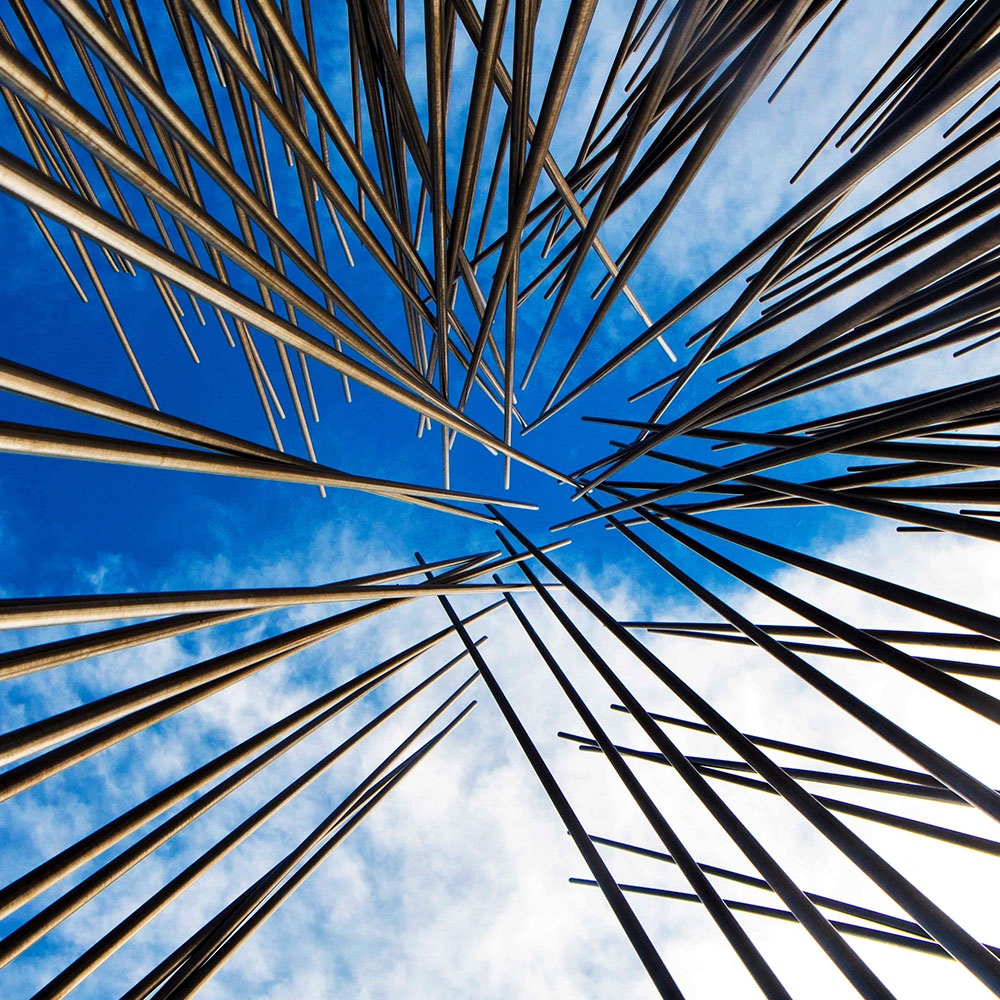To Human Rights
León Ferrari
Stainless steel rods on wooden beams, 6 x 3 x 3 m.
2011
Work awarded as a loan by the Foundation Augusto and Leon Ferrari -Art and Heritage.
This piece created by León Ferrari is a sonorous sculpture conceived of by the artist as an artifact for drawing sounds and creating musical, visual and tactile occurrences. As a poly-sensorial sculpture, music can be executed and performances can be created involving it. In Ferrari´s words: “You can touch my sculptures with your hands, with a violin bow, or however you like. I believe that the divisions in botany are quite adequate, where an intrinsic need for labeling exists. In art, this is absolutely dispensable”.
León Ferrari (Buenos Aires, Argentina, 1920 – 2013). In 1955, Ferrari began to make ceramic sculpture and from 1959 to 1960, carved wood pieces and wire
structures. In 1962 he began his written drawings or abstract writing, drawings that were organized in lines similar totraditional writing format. For the Premio Di Tella in 1965, he presented La civilización
occidental y cristiana (Western Christian Civilization), a crucified Christ figure from a religious specialty shop mounted on a North American fighter-bomber, which was censored. He abandoned art that same year, limiting his activity to participating in group shows: Homenaje al Vietnam (Homage to Vietnam, 1966),
Tucumán arde (Tucuman is Burning, 1968) and Malvenido Rockefeller (Unwelcome Rockefeller, 1969), among others. In 1966, he composed the literary collage Palabras ajenas (Other People’s Words). In 1976, he made a compilation of news items covering repression by the military dictatorship that he published with the title Nosotros no sabíamos (We Didn’t Know). That same year he left the country
for political reasons and settled in San Pablo, Brazil. In 1980, he produced a series of blueprint floor plans and developed a group of musical instruments that he
used in several performances. In 1983 he returned to the political-religious theme with collages and illustrations of the Bible that mixed Catholic iconography, oriental erotica and contemporary imagery. He returned to Buenos Aires in 1991, where he continued to make art against repression by either religious or political power. In 1996, he illustrated Nunca más (Never Again), the book published in
installments by Página/12 newspaper. In 2004 a retrospective show of his work was held at the Centro Cultural Recoleta, which provoked intense debates and aggression carried out by supporters of the Church. An anthology exhibition of his work was held in 2006 at the Pinacoteca do Estado de São Paulo in Brazil, and he simultaneously participated as a special
invited guest at the Bienal de São Paulo. In 2007, he was awarded the León de Oro at the 52 Esposizione Internazionale d’Arte organized by the Bienalle di Venezia. In 2009, the Museum of Modern Art (moma) held a retrospective exhibition of his work along with that of Mira Schendel, which was later shown at the Museo Nacional Centro de Arte Reina Sofía in Madrid and at the Fundação Iberê Camargo in Porto Alegre.
